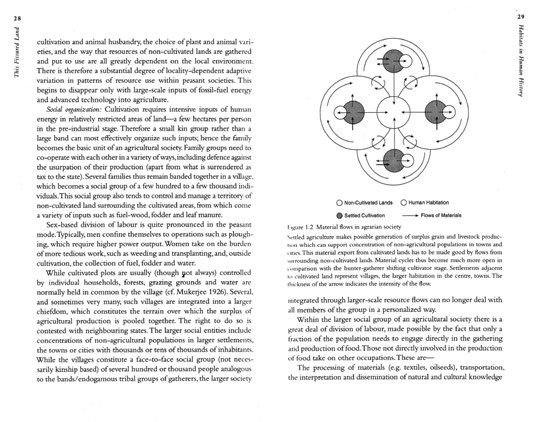Environment & Ecology
CULTURES IN CONFLICT | Review by Rahul Paul
LA 62 |
|
| With the growth of cities in recent decades, spatial design professionals are expanding their areas of work in the area of policy formulation concerning urban design issues. Although unseen, it is an important role in the urban development.
|
|
|
|
|
|
The Fissured Land: An Ecological History of India
Author: Madhav Gadgil & Ramachandra Guha
Published by Oxford University Press, 1992
|
|
|
The serious academic study of India’s environmental history began only in the 1980s—at a time when social history, cultural history and economic history and women’s history, were well developed (sub) disciplines. Environmental history, emerging globally as a discipline only in the 1960s and 70s. Sieving the discipline in India, reveals a first wave—‘drawing attention to locally based conservation movements’, a second wave—‘adding chronological depth to ecological by tracing their origins’ and the current third wave that—‘deconstructing the categories by which current and historically earlier diverse and often contending groups have conceptualized the nonhuman world around them.’ This Fissured Land: An Ecological History of India, is a ‘second wave’ (and one of the earliest) work in this discipline.
The Oxford India Perennials edition of the book published in 2013 prefaces the authors’ ambitious note on the principal scholarly aims of the book: one analytical, the other descriptive, towards ‘opening up the field of environmental history’ that was still in its infancy. It concludes on a contemplative note stating, ‘the social strife and environmental degradation currently underway means that regrettably, the title of the book is even more apt now than it was on its first publication’, in 1992. One cannot argue that the statement is even more relevant today.
Four themes—prudence, profligacy, strategies of resource use and the conflicts they give rise to—provide the unifying framework for the three parts of the book. The first part—A theory of Ecological History—as the name suggests, is a theoretical positioning of the book, for understanding relations between human society and the natural world. Though arguably oversimplified and based on Marxian literature of Modes of Production and extending it to Mode of Resource, the chapters discuss aspects of technology, economy, social organization, ideology, and the ecological impact of gathering, nomadic pastoralism, settled cultivation, and industry. Illustrating through very simple diagrams the material flows—land and its usage, a concept that has long been diluted under the emerging trend of ‘land use’ patterns—of each society, it then elaborates on characteristic forms of social conflict between and within different modes. The authors convincingly argue that ‘more the spatial separation from the forest (natural system), greater the impact on its ecology, as actors are further removed from the consequences of this impact’.
|
|


|
|

| |
|
|
|